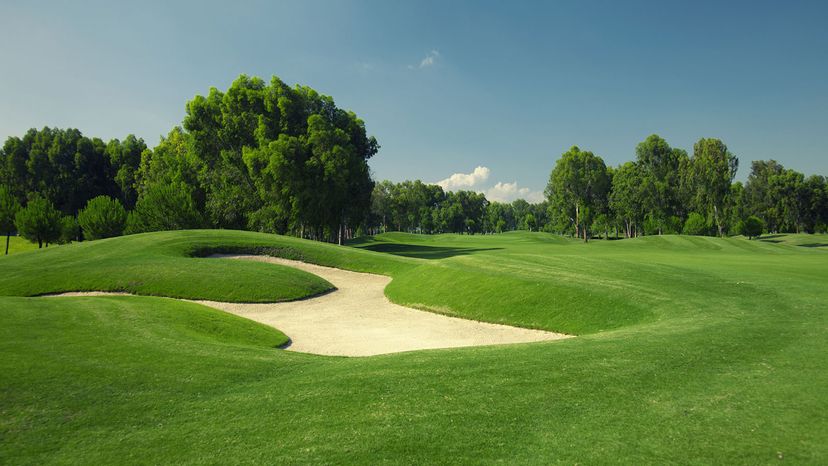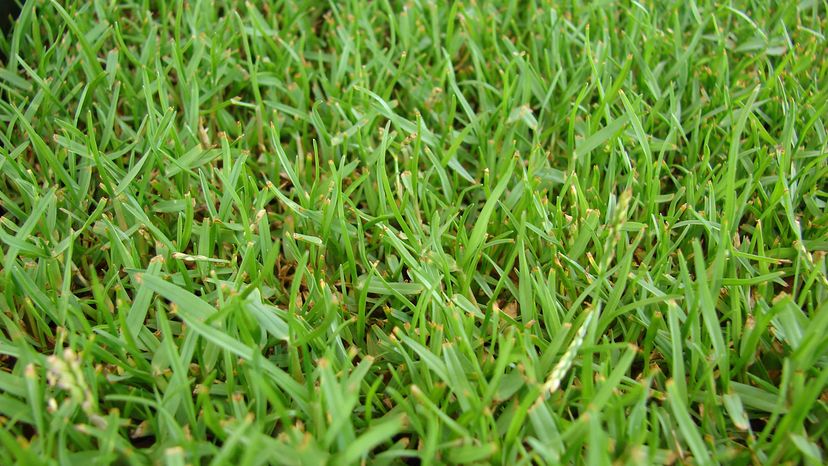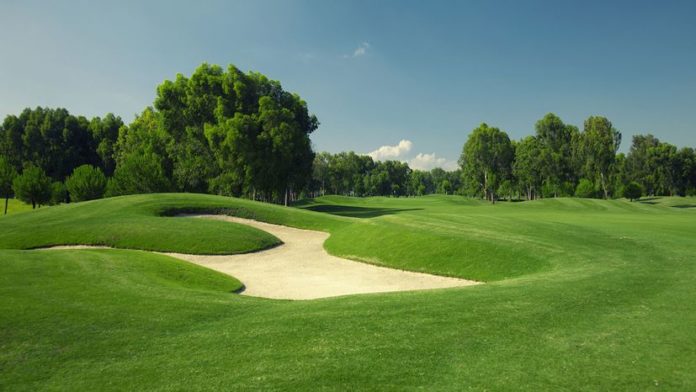 “Zoysia grass is often used on golf courses thanks to its smooth, springy surface. logosstock/Getty Images
“Zoysia grass is often used on golf courses thanks to its smooth, springy surface. logosstock/Getty Images
If there’s a lawn in your neighborhood that’s greener, thicker and generally more luxurious looking than everyone else’s, chances are it isn’t Bermuda or fescue, but zoysia (pronounced ZOY-shuh). In addition to giving your lawn a lovely look, zoysia is drought-tolerant and can stand up to heat and heavy foot traffic. It does well in the Southern U.S. and in California.
There are three types of zoysia grass: Zoysia japonica, Zoysia matrella and Zoysia tenuifolia. Z. japonica and Z. matrella are the most likely to be used to create a full lawn.
"Zoysia grass can provide the most beautiful yards in the south, especially Z. matrella. However, this type of beauty doesn’t occur by chance and the homeowner must recognize the inputs required to achieve this," explains Adam Gore, agriculture/horticulture extension agent at the Clemson University Cooperative Extension Service in South Carolina in an email interview.
Although Z. matrella is the creme de la creme of the zoysia family, it’s not the only option for homeowners who don’t have the time to excessively baby a lawn." Z. japonica can also provide a desirable yard without unusual excessive inputs. This versatility offers just about every homeowner the level of beauty they are willing to invest in," he says.
Why Plant Zoysia?
Attractiveness aside, there are other reasons that people choose zoysia over Bermuda. Much like Bermuda grass, zoysia is a warm-season grass. This means it grows during the warm weather months of spring, summer and early fall, then goes dormant (turns brown) in the winter.
"It does well in the warm and humid climate of the Southeast; however unlike Bermuda grass, zoysia grass is able to tolerate and survive in areas that receive decreased amounts of direct sunlight. Where Bermuda grass demands at least eight hours of this direct light, some cultivars or varieties of zoysia can handle amounts as low as four to five hours if mowed at its high end."
This makes zoysia an excellent option for people who have a shaded yard, but still want a nice, thick lawn. Besides that, Gore says that Bermuda and zoysia are similar in maintenance requirements. The height of cut is pretty much the same, and the timing of fertilizer, herbicide application and aerification are done in the same time frame. "Think of zoysia grass as a more cold- and shade-tolerant Bermuda grass," he says.
Another major benefit of zoysia is that it is denser than other grasses, once established. This helps prevent unsightly weeds from coming up. Anyone who has ever done battle with persistent crabgrass knows what a perk this is. The density also makes it ideal for people who like to run around playing lawn games, as zoysia won’t run down nearly as fast as Bermuda.
Growing Zoysia Grass
The biggest challenge with zoysia is getting your lawn started. Like most other turf grasses, the best way to establish a successful lawn of zoysia is by using sod rather than seed. "The key to any lawn establishment is the soil, it is the foundation for a good lawn," Gore says. "Soil should be well-draining with a firm but loose layer of topsoil."
 “This turf of zoysia grass was on sale in a Hawaii nursery.Forest & Kim Starr/Wikimedia/CC BY 3.0 US
“This turf of zoysia grass was on sale in a Hawaii nursery.Forest & Kim Starr/Wikimedia/CC BY 3.0 US
Gore also notes that phosphorus levels in the soil are critically important. "The easiest way to figure this out, as well as to determine any other needs of your soil would be to take a soil sample and submit it for analysis," he says, adding that there are DIY kits available to determine phosphorus levels, as well as public and private labs. If possible, he recommends using your local university lab. For example, South Carolina residents might go through Clemson University, for Georgia locals the ideal is the University of Georgia, and so on.
If a problem is present, the lab will tell you what to do. "An analysis report of the sample should include any recommendations as well as some products to use," Gore explains.
Zoysia also must be diligently watered, especially in the early days of lawn establishment. "Soil should remain damp, but not flooded, until the grass has become established (you shouldn’t be able to pull up by hand)," says Gore. "Once the sod has taken, or seedlings have reached 1.5 inches [3.8 centimeters] in height, apply a nitrogen fertilizer." Zoysia is slower-growing than other grass species, so it can take longer for the lawn to establish.
Ongoing Care of Zoysia Grass
Much like Bermuda, zoysia grass requires two to five fertilizations during the active growing season, which in the Southern U.S. is roughly late April to early September. This equates to a yearly total of 2 to 4 pounds (0.9 to 1.8 kilograms) of nitrogen per 1,000 square feet (93 square meters) of turf, Gore explains.
"Mowing heights are normally around 1.5 to 2 inches [3.8 to 5 centimeters], but heavier shaded areas can see that go as high as 2.5 inches [6 centimeters]," Gore notes. Obviously, proper watering also plays a major role. "During active growth, zoysia grass turf requires approximately 1 inch [2.5 centimeters] of water per week."
He recommends that irrigation be done in the early morning hours because this cuts down on evaporation loss. It also helps the grass stay wet longer. Ideally, he says, irrigation timers should be set to run for longer periods but for fewer days, a practice he refers to as "deep and infrequent."
Now That’s Cool
The third variety, Zoysia tenuifolia is also lovely, but is slow-growing and cold intolerant, so it’s not typically used for a full lawn. Instead, it’s more commonly implemented as an ornamental specimen plant in Asian gardens, as it’s puffier in appearance than the other two zoysia types. Incidentally, zoysia is native to Asia, which is probably why Z. tenuifolia is used in this manner.








































